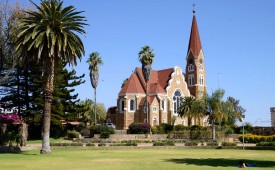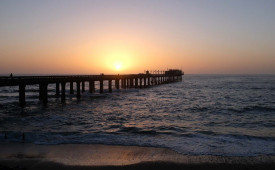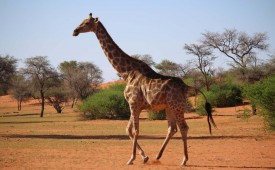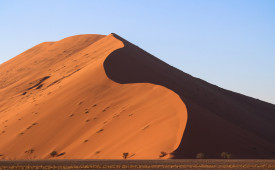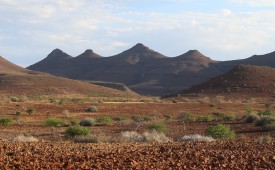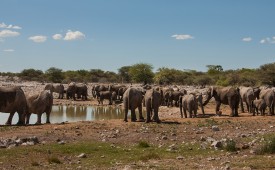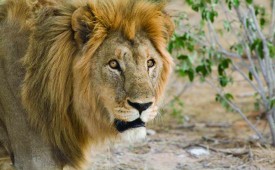-
Latin America
Latin America
- Countries (hidden space)
- Galapagos & Ecuador
- Guatemala
- Mexico
- Panama
- Peru
- Popular Attractions
- Machu Picchu
- Inca Trail
- Easter Island
- Galapagos Islands
- Patagonia
- Rio de Janeiro
- Iguazu Falls
-
Africa
Africa
- Spacer Africa
- South Africa
- Zimbabwe
- Popular Attractions
- Cape Town
- Okavango Delta
- Sossusvlei Dunes
- Victoria Falls
- The Kruger
- The Garden Route
- Masai Mara
-
Asia & Middle East
Asia & Middle East
- Asia
- Borneo (Malaysia)
- Cambodia
- India
- Japan
- Middle East
- Jordan
- Spacer Asia
- Laos
- Sri Lanka
- Uzbekistan
- Vietnam
- Popular Attractions
- Taj Mahal
- Lion Rock (Sigiriya)
- Angkor Wat
- Ha Long Bay
- Kyoto
- Petra
-
Destinations
- Latin America
- Argentina
- Bolivia
- Brazil
- Chile
- Colombia
- Costa Rica
- Galapagos & Ecuador
- Guatemala
- Mexico
- Panama
- Peru
- Asia
- Borneo (Malaysia)
- Cambodia
- India
- Japan
- Laos
- Sri Lanka
- Uzbekistan
- Vietnam
- Middle East
- Jordan
- Southern & East Africa
- Botswana
- Kenya
- Namibia
- South Africa
- Zimbabwe
- Contact Us
-
About
About
Llama Travel provides high quality holidays at the lowest possible prices.
99% recommend us Lower prices - guaranteed Financially protected by ATOL
Travelling to Namibia
Travelling in Namibia
-
Money
The currency in Namibia is the Namibian Dollar. The South African Rand is also accepted everywhere in Namibia, and both currencies have the same value. Credit and debit cards can be used in many shops and restaurants, and can also be used to withdraw money from cash machines. In the remote areas, it is best to take cash as there are no ATMS at the lodges, although it is possible to pay by Visa or MasterCard.
It is always recommended to inform your bank that you are travelling abroad and to which countries. This will allow them to authorise money withdrawals from your account when you are away. Some banks say that this is not necessary, however we would still recommend contact with your bank as in some cases people have had difficulty in withdrawing currency.
-
Tipping
Tipping in Namibia is standard practice. Wages are low so many people depend on tips to make up the shortfall in their earnings. Restaurant staff are used to receiving 10-15% of the total bill. You can tip your cab driver by rounding up to the nearest ten (although use your discretion regarding distance, time of day etc), and the same goes for general hotel staff. It is recommended to tip guides and drivers USD10 per day when in a group (this will be shared between them).
-
Budgeting for your stay
All hotels include breakfast, and other meals are included on some excursions and in several of the lodges. However, you will often need to arrange your own lunches and dinners. We recommend budgeting approximately N$100 – 120 for lunch in a restaurant, N$45 for a sandwich and N$250 – N$300 for a 2-course meal in a restaurant in Windhoek or Swakopmund.
Bar prices are similar to the UK and you should expect to pay around N$25 for a coffee, N$15 for a soft drink, N$25 for a draught beer and N$45 for a glass of wine.
Throughout Namibia there are opportunities to shop for souvenirs and we advise setting aside some of your budget for this purpose. Credit cards are accepted in many places although Amex has more limited use.
-
Food
Namibia is a very meat-orientated society, and many menu options will feature steaks from one animal or another. However, there is usually a small vegetarian selection in most restaurants, and often a seafood option. Vegan and other diets can be difficult to cater for. The food at restaurants tends to be European in style, with a bias towards German dishes and seafood. Biltong is a dried meat snack famous throughout southern Africa, and a very popular snack amongst locals.
In Windhoek there are a range of restaurants to choose from. Namibian oysters are some of the finest in the world, and can be found amongst a variety of shellfish on the coast around the Skeleton Coast. Dinners are included at some of the lodges on the holiday, featuring many local products and the famous local choices of beef and game. This is usually a buffet with a choice of salads, meats, vegetables and fruit or a cooked dessert. On travelling days, you will either have a packed lunch or there will be opportunities to stop on the journey to buy snacks, then have a late lunch upon arrival at the next destination (not included).
-
How safari visits work in your vehicle
For the majority of the holiday, you will be in a tour vehicle with a maximum of 18 passengers. The benefit of this is that you are protected from the heat and dust, although views may be slightly more obstructed and you won’t have a wildlife spotter. In Damaraland, you are in an open safari vehicle with up to 9 passengers. In Etosha, there is the possibility to change from your normal tour vehicle to an open safari vehicle, for a supplement. This offers a more classic safari experience as you can get closer to the animals, with excellent photography opportunities.
-
Journeys in Namibia
Long journeys are a given in Namibia, due to the geography of the country and its vast landscapes which are spread across thousands of square miles. To give an idea of scale, Namibia is approximately three and a half times the size of the UK, but the UK is home to 64 million more people. The main itinerary covers long distances, and bumpy gravel roads are common, with some journeys taking up the majority of the day. The journeys are stunning with plenty of good photography opportunities, with ever-changing landscapes ranging from mountains to red sand dunes and endless grass plains with acacia trees. There are breaks to stretch your legs, use the toilet and buy snacks, before arriving at the next destination. There are not usually restaurants, so lunch is often just a few snacks you can buy – on these days, we recommend having a hearty breakfast. The journey from Swakopmund to Palmwag in Damaraland is the longest drive of the trip, and takes up the majority of the day. Delays can sometimes occur if the vehicle has a mechanical fault or a tyre needs to be changed.
-
What to pack - Namibia
Partially covered by the Namib, one of the world’s driest deserts, Namibia’s climate is generally very dry and pleasant. The cold Benguela current keeps the coast cool, damp and free of rain for most of the year. Inland, all the rain falls in summer (November to April). January and February are hot, when daytime temperatures in the interior can exceed 40°C, but nights are usually cool. Winter nights can be fairly cold so it is recommended to bring some warm items.
During the day it is generally hot, so you should pack lightweight loose-fitting clothes in natural fabrics, such as linen or cotton. Although mosquitos are not a big problem in Namibia, and only found in certain parts, precautions should still be taken, such as wearing long-sleeved shirts and long trousers at night.
Electrical sockets in Namibia are 220 Volts. Sockets fit plugs with three round pins.
We recommend you carry a copy of your passport with you at all times.
Please bring any medication you may require from the UK.
You can bring whichever luggage you feel most comfortable with: suitcases, soft bags and rucksacks are fine.
Lightweight, light coloured cotton trousers and long-sleeved shirts
Absorbent socks
Walking boots
Pullover or jacket for the early mornings and evenings
Warm hat and gloves for winter months
Sun hat
Swimsuit
Binoculars
Camera equipment – a lens with a long zoom is recommended for photographing wildlife
Torch
Water bottle
Sun cream
Insect repellent
Day pack

